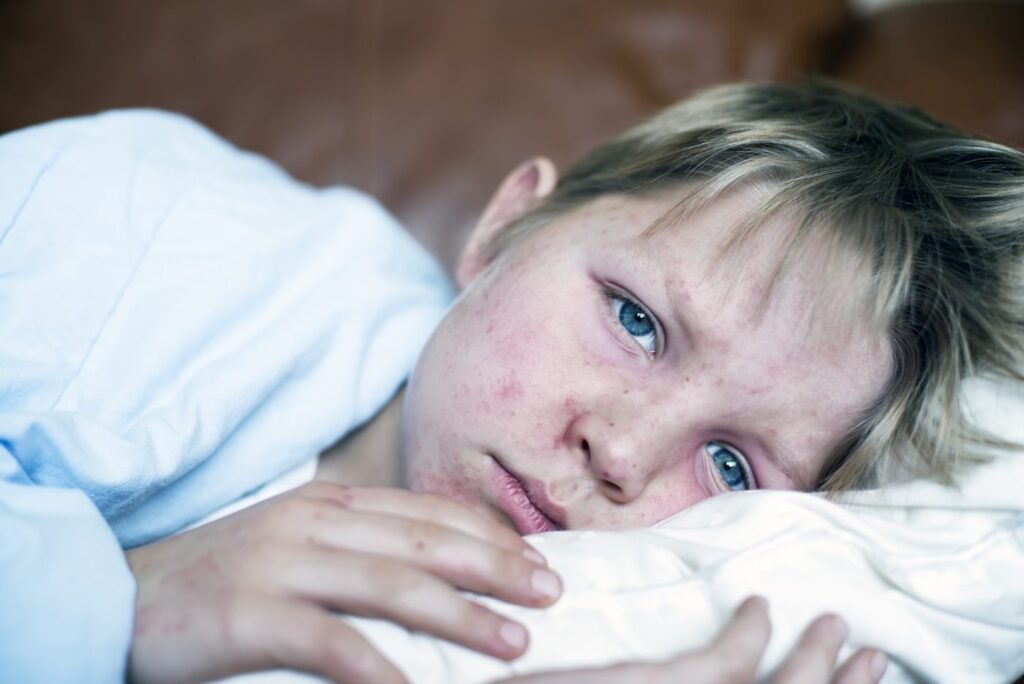At the Association for Molecular Pathology (AMP) Annual Meeting on Thursday, November 13, Benjamin Pinsky, MD, PhD, professor of pathology and medicine at Stanford University School of Medicine, delivered a sobering session on the re-emergence of vaccine-preventable infectious diseases—most notably measles—in the wake of the COVID-19 pandemic. His talk, “Emerging Public Health Threats: Re-Emerging Vaccine-Preventable Infectious Diseases,” traced how pandemic-related disruptions, declining vaccine confidence, and reduced global immunization coverage have created fertile ground for outbreaks long thought to be under control.
Pinsky opened with a stark figure from UNICEF’s State of the World’s Children 2023 report: 67 million children worldwide either missed all vaccinations or fell behind during the pandemic. Health systems strained by COVID-19, chronic workforce shortages, stay-at-home orders, and widespread fear of visiting medical facilities all contributed to these lapses. Compounding the issue, he said, was the pandemic’s powerful impact on public perception. “The pandemic exacerbated drivers of vaccine hesitancy,” Pinsky explained, highlighting inconsistent public health messaging, escalated misinformation, and public unease about rapid vaccine development—even though COVID-19 vaccines ultimately proved “extraordinarily safe and effective.”
The result has been a measurable global decline in confidence in childhood vaccines. Pinsky presented data from the Vaccine Confidence Project showing decreases across most WHO regions from 2015 to 2022. “In the post-pandemic time, the confidence in vaccines is much lower,” he said. Only the Western Pacific region showed any notable stability.
From this broad backdrop, Pinsky turned to measles—“an exclusively human pathogen” and one of the most infectious viruses known. The history of the disease, he noted, stretches back at least to the 9th century writings of Persian physician Al-Razi, while modern understanding and laboratory characterization emerged over the last four centuries. Measles virus, a single-stranded negative-sense RNA virus from the Paramyxoviridae family, has a basic reproduction number—the average number of cases of an infectious disease arising from a single infected individual in a susceptible population—estimated between 12 and 18, far higher than influenza or pre-vaccine SARS-CoV-2. “It is amongst the most infectious agents that we know about,” he emphasized.
That extraordinary transmissibility—combined with falling vaccination rates—has allowed measles to return with force. Pinsky reviewed the virus’s clinical progression, including its hallmark Koplik spots and the downward-spreading maculopapular rash, as well as its potentially devastating complications. Pneumonia occurs in up to one in 20 children; encephalitis strikes as many as one in 1,000; and death occurs in one to three of every 1,000 infected children. Particularly alarming is subacute sclerosing panencephalitis (SSPE)—a fatal neurological condition that can develop years after measles infection. “These are much higher rates than we see for the side effects of the vaccines,” Pinsky said.

He then detailed current diagnostic tools—RT-PCR assays and IgM serology—and walked the audience through the scientific history of measles vaccination, from Francis Home’s failed 18th-century inoculation attempts to the groundbreaking work of John Enders, Maurice Hilleman, and others who developed the live attenuated vaccines still in use today. Vaccination remains highly effective: one dose provides 93% protection, two doses 97%.
Yet despite this success, measles has surged. In the United States, close to 1,700 cases have been reported in the past year, “primarily unvaccinated children,” with clusters centered in under-vaccinated communities in Texas. Of those, 12% of infected individuals have been hospitalized with three deaths. Globally, cases have risen sharply since 2021 from an estimated worldwide total of 59,600 cases to 359,600 in 2024. Further, in 2023, approximately 107,500 individuals died from vaccine-preventable measles. He also noted that Canada has now lost its measles elimination status, with sustained transmission across multiple provinces and tragedies including congenital infections that resulted in fetal loss.
Pinsky highlighted one encouraging insight: even small increases in vaccination coverage could sharply reduce cases and complications. Modeling from his Stanford colleagues shows that while declining vaccination rapidly increases risk, modest improvements have an outsized protective effect. “Improving vaccine uptake provides a clear opportunity to control measles and other re-emerging vaccine-preventable infectious diseases,” he concluded.
At the end of the session, additional context was provided by influenza virologist Andrew Pekosz, PhD, professor of molecular microbiology, Johns Hopkins Bloomberg School of Public Health, who addressed concerns about global influenza vaccine strain selection, capacity, and the reliance on multiple laboratories to grow and characterize candidate strains. Pekosz explained that while genetic sequencing of flu viruses is robust—“we have a good sense of the mutations that are occurring and the clade evolution”—the challenge lies in the empirical, laboratory-based work of generating vaccine stocks. Candidate strains must express the appropriate hemagglutinin proteins, replicate efficiently in eggs, and meet other requirements that historically involved significant CDC participation.
“When you take one [laboratory] off the table, you’re relying on a smaller number of laboratories to generate those strains,” Pekosz said. Although WHO routinely contracts with multiple partners, fewer contributors may reduce the global capacity to produce difficult strains. Still, he noted that even though the U.S. will not formally participate in the WHO selection process this year, alignment is expected: “Vaccine manufacturers are international… and they are going to try to be as straightforward as possible for sharing selections and making them available consistently across the globe.”
Together, the insights from Pinsky and Pekosz underscored a central message of the AMP session: the post-pandemic world faces newly energized threats from old pathogens.

